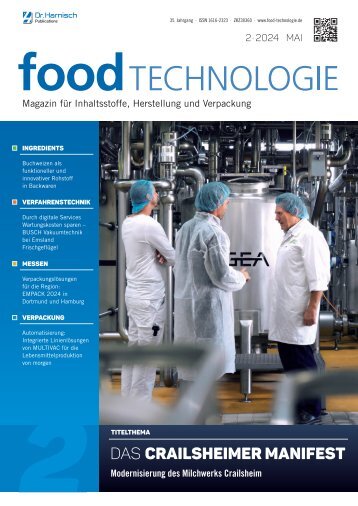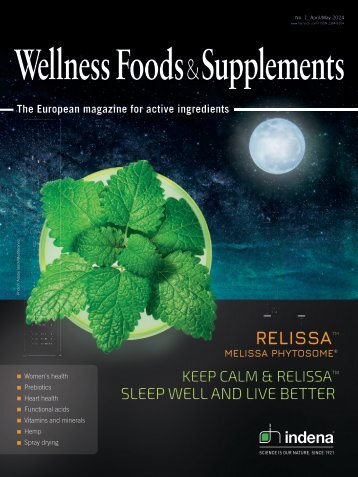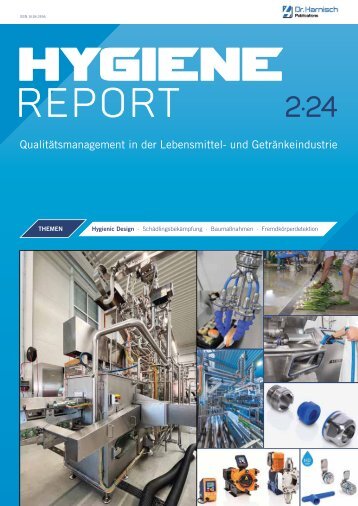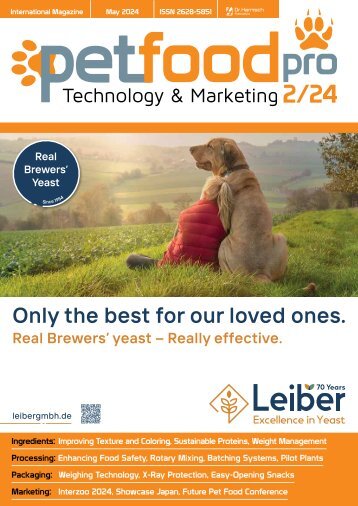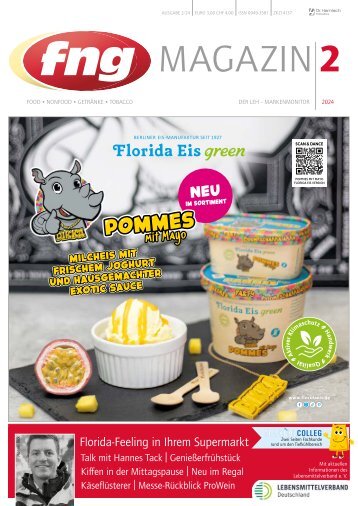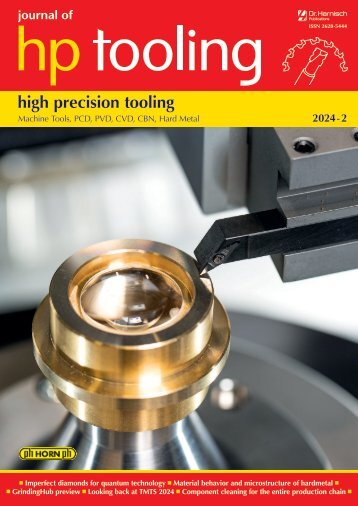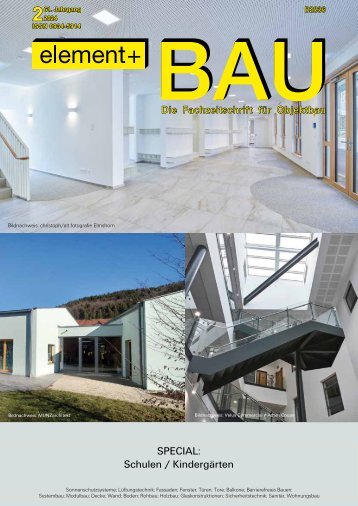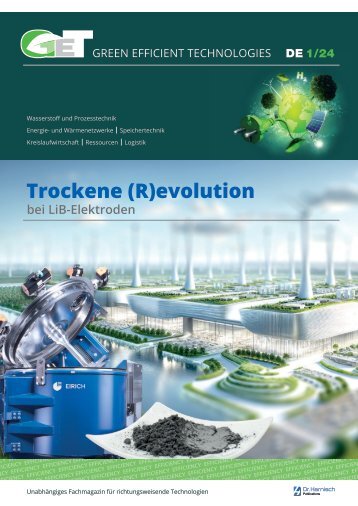food Marketing & Technology 4/2021
- Text
- Harnischcom
- Protein
- Flavor
- Solutions
- Processing
- Consumers
- August
- Ingredients
- Packaging
- Products
- Marketing
Processing “In a test
Processing “In a test environment, you extract samples manually and take them to the lab for analysis. In order to be able to automate this analysis process, we first had to define it, step-by-step. There was no state of the art, recalls Lukas Neuwirth, who was heavily involved in the development of the process. “That’s why it was important during this phase to find partners who understood that we were unable to exactly formulate the requirements at the product level. That was immediately the case with Endress+Hauser. We carried out numerous tests to determine the suitability of a wide variety of sensors. During this phase, it was very helpful for us as a startup to have Endress+Hauser make numerous products available to us at no cost and provide us solid advice and valuable tips.” Measurement parameters and manipulated variables Roswitha Schützner managed the project from Endress+Hauser Austria’s side. “The collaboration with Jongerius ecoduna was highly exciting and interesting from the very start,” admits the project manager for analysis technology in describing her personal enthusiasm. “I was impressed by the vision and the spirit of the young and motivated development team.” A lot of joint testing was carried out, which then resulted in a sensor standard that could be used to begin series production. “The two most important measurement parameters are pH and optical density,” reveals Lukas Neuwirth. “We can use the pH value to draw conclusions about the CO 2 saturation and the optical density provides direct information regarding the algae concentration, and thus the cell growth.” This measurement data makes it possible to continuously sustain ideal growth conditions through targeted feeding of CO 2 and other nutrients based on the current requirements of the microalgae at multiple points in the system. In concrete terms, each reactor has an inline »OUSBT66« near-infrared absorption sensor and a CPS11D pH sensor from the Orbisint series, both from Endress+Hauser. “What we really liked about the Endress+Hauser products was the possibility to measure directly in the reactor without a bypass,” adds Lukas Neuwirth. “We’re testing sensors from other manufactures as well.” The CPS11D pH sensor - the digital jack-of-all-trades for process control technology within the Endress+Hauser portfolio - is moisture- and corrosionresistant, can be calibrated in the lab and enables predictive maintenance thanks to the integrated “Memosens” technology. The OUSBT66 absorption sensor for monitoring optical density measures in the 860 nm near-infrared range, which means the performance is unaffected by different colors of algae. The measuring principle is based on Beer-Lambert’s law, which relates the attenuation of light to the properties of an absorbent material through which the light is travelling. Furnished with an NIST-traceable and certified push-on filter, the OUSBT66 is especially easy to inspect and calibrate. Over the course of harvesting, CLS82D digital 4-electrode conductivity sensors are employed during cross-filtering of the water in the filtrate, which is then recirculated to the process. The signals from all three sensors are analyzed by a CM44P transmitter from Endress+Hauser, which supplies its data via Profibus to a control application employed by a system integrator using technology from Siemens. Well looked after algae Jongerius ecoduna was successful in harmonizing the biological and technological processes for the algae production system, thus making it suitable for industrial scale use. Lukas Neuwirth nevertheless sees plenty of additional optimization and research potential for even better cultivation conditions and is already looking forward to another sensor envisaged by Endress+Hauser. “The next thing we want to do is optimize the mixing ratio between recirculated and fresh water by measuring the organic carbon in the filtrate as a TOC value.” fmt 24 food Marketing & Technology • August 2021
Processing We bring colour into view! Compact capacitive level switches with 360° custom-colour status display 256 colours Individually selectable: Measurement in progress Sensor switching Process malfunction Compact design 15 cm Hygienic adapter system Adjustment via smartphone www.vega.com/vegapoint food Marketing & Technology • August 2021 Key No. 99290 25
- Seite 1 und 2: 4/21 Vol. 35 • 31377 ISSN 0932-27
- Seite 3 und 4: Editorial Everyone’s Nutrition is
- Seite 5 und 6: Vol. 35 • 31377 ISSN 0932-2744 4/
- Seite 7 und 8: Cover Story potato and corn starch,
- Seite 9 und 10: Ingredients The leading in-person a
- Seite 11 und 12: Ingredients Author: Carolina Diaz Q
- Seite 13 und 14: Ingredients The dairy health trend
- Seite 15 und 16: Ingredients Reformulation: the Cham
- Seite 17 und 18: Ingredients “Veganizing formulati
- Seite 19 und 20: Ingredients Global Alternative Prot
- Seite 21 und 22: Ingredients 7-9 NOV 2021 DUBAI WORL
- Seite 23: Processing years ago, was the break
- Seite 27 und 28: Processing The mixer meets all requ
- Seite 29 und 30: Processing time of a traditional ro
- Seite 31 und 32: is the characteristics of the produ
- Seite 33 und 34: Processing SIMULATE WHOLE MUSCLE ME
- Seite 35 und 36: Processing ensures, that not too mu
- Seite 37 und 38: Processing PP20H pressure sensors i
- Seite 39 und 40: Packaging Markus Bigler, Chief Exec
- Seite 41 und 42: Packaging 28 - 30 SEPT 2021 NEC, BI
- Seite 43 und 44: Marketing something which will bene
- Seite 45 und 46: Marketing WACCSE now co-located wit
- Seite 47 und 48: Events hall layout with wider alley
- Seite 49 und 50: Events Q3 2021 22-25 September Tehr
- Seite 51 und 52: Vol. 35 • 31377 ISSN 0932-2744 4/
Unangemessen
Laden...
Magazin per E-Mail verschicken
Laden...
Einbetten
Laden...








































